322 start with G start with G




What determines the rate of growth, the distribution of income, and the structure of relative prices under capitalism? What, in short, makes capitalist economies tick? This watershed treatise analyzes the answers to these questions provided by three major theoretical traditions: neoclassical, neo-Marxian, and neo-Keynesian. Until now, the mutual criticism exchanged by partisans of the different traditions has focused disproportionately on the logical shortcomings of rival theories, or on such questions as whether or not input–output relationships can be described by a continuous-substitution production function.
In this book, these are at best secondary issues. The real distinguishing features of the theories, for Stephen Marglin, are their characterization of labor markets and capital accumulation. For clarity, Marglin first sets out the essential features of each theory in the context of a common production model with a single good and a fixed-coefficient technology. He then formalizes the different theories as alternative ways of closing the model. In subsequent chapters he examines the effects of relaxing key simplifying assumptions, in particular the characterization of technology and the homogeneity of output and capital. And although his primary emphasis is theoretical, he does not ignore the problem of empirically testing the theories. Finally, he synthesizes the insights of the neo-Marxian and neo-Keynesian models into a single model that transcends the shortcomings of each taken separately.
Marglin anticipates that partisans of the different traditions will agree on one point: each will allow that the book reveals the shortcomings of the other theories but will insist that it fails utterly to reflect the power and majesty of one’s own particular brand of truth. Growth, Distribution, and Prices will be controversial, but it will not be ignored.


Arthur McKeown presents the first full-length analysis of the continuation of Buddhism in India after the thirteenth century. This study describes later Indian Buddhism through a detailed examination of the life of Śāriputra (c. 1335–1426), the last known abbot of the Bodhgayā Mahāvihāra, whose very presence extends Indian Buddhism by two centuries. This work also provides a view into the legacy of Indian Buddhism in fifteenth-century Nepal, Tibet, and China. McKeown follows Śāriputra’s travels and works throughout pan-Buddhist Asia, from restoring the Swayambhunātha caitya in Nepal and establishing tantric lineages in Tibet to overseeing the rebuilding of the Mahābodhi temple in Ming Dynasty Beijing.
McKeown centers his examination on newly revealed Tibetan and Chinese biographies of Śāriputra, as well as looking at a collection of historical documents in Sanskrit, Tibetan, and Chinese. These sources point to a fundamental reconsideration of later Indian Buddhism, its relationship with Brahmanism and Islam, and its enduring importance throughout Central, East, and Southeast Asia.
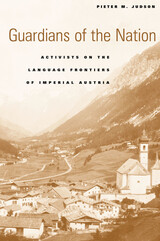
In the decades leading up to World War I, nationalist activists in imperial Austria labored to transform linguistically mixed rural regions into politically charged language frontiers. They hoped to remake local populations into polarized peoples and their villages into focal points of the political conflict that dominated the Habsburg Empire. But they often found bilingual inhabitants accustomed to cultural mixing who were stubbornly indifferent to identifying with only one group.
Using examples from several regions, including Bohemia and Styria, Pieter Judson traces the struggle to consolidate the loyalty of local populations for nationalist causes. Whether German, Czech, Italian, or Slovene, the nationalists faced similar and unexpected difficulties in their struggle to make nationalism relevant to local concerns and to bind people permanently to one side. Judson examines the various strategies of the nationalist activists, from the founding of minority language schools to the importation of colonists from other regions, from projects to modernize rural economies to the creation of a tourism industry. By 1914, they succeeded in projecting a public perception of nationalist frontiers, but largely failed to nationalize the populations.
Guardians of the Nation offers a provocative challenge to standard accounts of the march of nationalism in modern Europe.

One of the most horrific innovations of the twentieth century was the deliberate strategy of total warfare--the obliteration of entire civilian populations. The first and in many ways the most striking use of this extreme measure came nearly 70 years ago when the ancient Basque hilltop town of Guernica was destroyed by the bombs of the German Condor.
Ian Patterson begins with a graphic account of what happened in Guernica on April 26, 1937, and its place in the course of the Spanish Civil War. This event focused the spotlight of media attention on the town of Guernica, and established Picasso's painting as the most famous modern image of the horrors of war. Yet Picasso's Guernica was only one of a huge number of cultural artifacts--paintings, films, novels, poems, plays--to explore the idea of indiscriminate death from the air. From the Blitz to Hiroshima to the destruction of the World Trade Center to daily carnage in Darfur and Iraq, war has been increasingly directed against civilians, who constitute an ever larger proportion of its casualties. Patterson explores how modern men and women respond to the threat of new warfare with new capacities for imagining aggression and death. An unflinching history of the locationless terror that so many people feel today, Guernica and Total War will engage anyone interested in the survival of cultures amid the disasters of war.
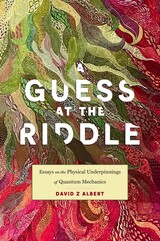
From the celebrated author of Quantum Mechanics and Experience comes an original and exhilarating attempt at making sense of the strange laws of quantum mechanics.
A century ago, a brilliant circle of physicists around Niels Bohr argued that the search for an objective, realistic, and mechanical picture of the inner workings of the atom—the kind of picture that had previously been an ideal of classical physics—was doomed to fail. Today, there is widespread agreement among philosophers and physicists that those arguments were wrong. However, the question of what that picture might look like, and how it might fit into a comprehensive picture of physical reality, remains unsettled.
In A Guess at the Riddle, philosopher David Z Albert argues that the distinctively strange features of quantum mechanics begin to make sense once we conceive of the wave function, vibrating and evolving in high-dimensional space, as the concrete, fundamental physical “stuff” of the universe. Starting with simple mechanical models, Albert methodically constructs the defining features of quantum mechanics from scratch. He shows how the entire history of our familiar, three-dimensional universe can be discerned in the wave function’s intricate pattern of ripples and whorls. A major new work in the foundations of physics, A Guess at the Riddle is poised to transform our understanding of the basic architecture of the universe.




Until now there has been no summary or overview of the wide range of work contributing to critical legal studies, the movement that has aroused such a furor in the communities of law and political philosophy. This book outlines and evaluates the principal strands of critical legal studies, and achieves much more as well.
A good deal of the writing in critical legal studies has been devoted to laying bare the contradictions in liberal thought. There have been attacks and counterattacks on the liberal position and on the more conservative law and economics position. Now Mark Kelman demonstrates that any critique of law and economics is inextricably tied to a broader critique of liberalism.
There are three central contradictions in liberal thought: between a commitment to mechanically applicable rules and to standards that fluctuate with situations; between intrinsic individual values and the objective knowledge of ethical truths; and between free will and determinism. Kelman shows us the pervasiveness of these contradictions in legal doctrine; their connection to broader political theory and to visions of human nature; and, finally, the degree to which mainstream thought tends to privilege certain of these commitments over others.
The author also analyzes two of the most significant components of jurisprudence today the law and economics discipline and the legal process school. He concludes with a lively discussion of the role of law generally and of “cognitive legitimation,” or the ways in which legal thought can make the unnecessary, the contingent, and the unjust seem natural, inevitable, and fair.
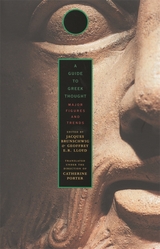
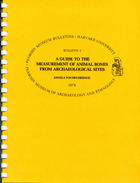

This book provides a basic guide to the study of the printed matter which has been produced in the United States. No comprehensive attempt has been made to record the great bulk of research in this field. Recognizing the need for an up-to-date guide to such investigations, G. Thomas Tanselle has compiled a listing of the principal material dealing with printing and publishing in this country.
In his Introduction, Tanselle surveys the research which has attempted to trace the history of printing and publishing in America from its inception to the present and explains how this material can be utilized effectively.
In nine carefully arranged categories he covers bibliographies of imprints of particular localities; bibliographies of works in particular genres; listings of all editions and printings of works by individual writers; copyright records; catalogues of auction houses, book dealers, exhibitions, institutional libraries, and private collections; retrospective book-trade directories; studies of individual printers and publishers; general studies of printing and publishing; and checklists of secondary material.
From the mass of material, an appendix selects 250 titles. Although the work is arranged so that the reader may easily locate relevant sections, a comprehensive index provides further aid in finding individual items.
“A successful checklist,” writes the author, “is not merely a work to be consulted for information but also a nucleus around which additional information can be gathered in a meaningful way; it provides a framework into which the community of workers in a field can place further references in an organized fashion.”
Guide to the Study of United States Imprints is a reference tool designed to serve both as a guide to research and as a practical manual for use in identifying, cataloguing, and recording printed matter. It will be of enormous value to scholars in American literature, history, and bibliography, to librarians, typographers, and bibliophiles, and to antiquarian book dealers and book collectors.

How is something as broad and complex as a personality organized? What makes up a satisfactory theory of personality? In this ambitious book, Jaan Valsiner argues for a theoretical integration of two long-standing approaches: the individualistic tradition of personalistic psychology, typified by the work of William Stern and Gordon Allport, and the semiotic tradition of cultural-historical psychology, typified by the work of L. S. Vygotsky. The two are brought together in Valsiner's theory, which highlights the sign-constructing and sign-using nature of all distinctively human psychological processes.
Arguing that the individualistic and the cultural traditions differ largely in emphasis, Valsiner unites them by focusing on the intricate relations between personality and its social context, and their interplay in personality development. The semiotic devices internalized from the social environment shape an individual's development, and the flow of thinking, feeling, and acting. Valsiner uses this theoretical approach to illuminate two remarkable, and remarkably different, phenomena: letters from the mother of Allport's college roommate, a key empirical case in Allport's theory, and the ritual movements of a Hindu temple dancer. Valsiner shows how both exemplify basic human tendencies for the cultural construction of life courses.
The Guided Mind shows the fundamental unities in the vastly diverse phenomenon of human personality.

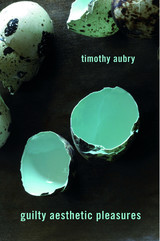
In the wake of radical social movements in the 1960s and 1970s, literary studies’ embrace of politics entailed a widespread rejection of aesthetic considerations. For scholars invested in literature’s role in supporting or challenging dominant ideologies, appreciating literature’s formal beauty seemed frivolous and irresponsible, even complicit with the iniquities of the social order. This suspicion of aesthetics became the default posture within literary scholarship, a means of establishing the rigor of one’s thought and the purity of one’s political commitments. Yet as Timothy Aubry explains, aesthetic pleasure never fully disappeared from the academy. It simply went underground.
From New Criticism to the digital humanities, Aubry recasts aesthetics as the complicated, morally ambiguous, embattled yet resilient protagonist in late twentieth-century and early twenty-first–century literary studies. He argues that academic critics never stopped asserting preferences for certain texts, rhetorical strategies, or intellectual responses. Rather than serving as the enemy of formalism and aesthetics, political criticism enabled scholars to promote heightened experiences of perceptual acuity and complexity while adjudicating which formal strategies are best designed to bolster these experiences. Political criticism, in other words, did not eradicate but served covertly to nurture reading practices aimed at achieving aesthetic satisfaction.
Guilty Aesthetic Pleasures shows that literary studies’ break with midcentury formalism was not as clean as it once appeared. Today, when so many scholars are advocating renewed attention to textual surfaces and aesthetic experiences, Aubry’s work illuminates the surprisingly vast common ground between the formalists and the schools of criticism that succeeded them.

"Endless forms most beautiful and most wonderful have been, and are being, evolved," Darwin famously concluded The Origin of Species, and for confirmation we look to...the guinea pig? How this curious creature and others as humble (and as fast-breeding) have helped unlock the mystery of inheritance is the unlikely story Jim Endersby tells in this book.
Biology today promises everything from better foods or cures for common diseases to the alarming prospect of redesigning life itself. Looking at the organisms that have made all this possible gives us a new way of understanding how we got here--and perhaps of thinking about where we're going. Instead of a history of which great scientists had which great ideas, this story of passionflowers and hawkweeds, of zebra fish and viruses, offers a bird's (or rodent's) eye view of the work that makes science possible.
Mixing the celebrities of genetics, like the fruit fly, with forgotten players such as the evening primrose, the book follows the unfolding history of biological inheritance from Aristotle's search for the "universal, absolute truth of fishiness" to the apparently absurd speculations of eighteenth-century natural philosophers to the spectacular findings of our day--which may prove to be the absurdities of tomorrow.
The result is a quirky, enlightening, and thoroughly engaging perspective on the history of heredity and genetics, tracing the slow, uncertain path--complete with entertaining diversions and dead ends--that led us from the ancient world's understanding of inheritance to modern genetics.

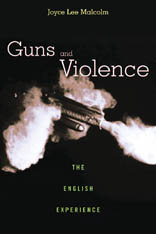
Behind the passionate debate over gun control and armed crime lurk assumptions about the link between guns and violence. Indeed, the belief that more guns in private hands means higher rates of armed crime underlies most modern gun control legislation. But are these assumptions valid?
Investigating the complex and controversial issue of the real relationship between guns and violence, Joyce Lee Malcolm presents an incisive, thoroughly researched historical study of England, whose strict gun laws and low rates of violent crime are often cited as proof that gun control works. To place the private ownership of guns in context, Malcolm offers a wide-ranging examination of English society from the Middle Ages to the late twentieth century, analyzing changing attitudes toward crime and punishment, the impact of war, economic shifts, and contrasting legal codes on violence. She looks at the level of armed crime in England before its modern restrictive gun legislation, the limitations that gun laws have imposed, and whether those measures have succeeded in reducing the rate of armed crime.
Malcolm also offers a revealing comparison of the experience in England experience with that in the modern United States. Today Americans own some 200 million guns and have seen eight consecutive years of declining violence, while the English--prohibited from carrying weapons and limited in their right to self-defense have suffered a dramatic increase in rates of violent crime.
This timely and thought-provoking book takes a crucial step in illuminating the actual relationship between guns and violence in modern society.
READERS
Browse our collection.
PUBLISHERS
See BiblioVault's publisher services.
STUDENT SERVICES
Files for college accessibility offices.
UChicago Accessibility Resources
home | accessibility | search | about | contact us
BiblioVault ® 2001 - 2024
The University of Chicago Press









